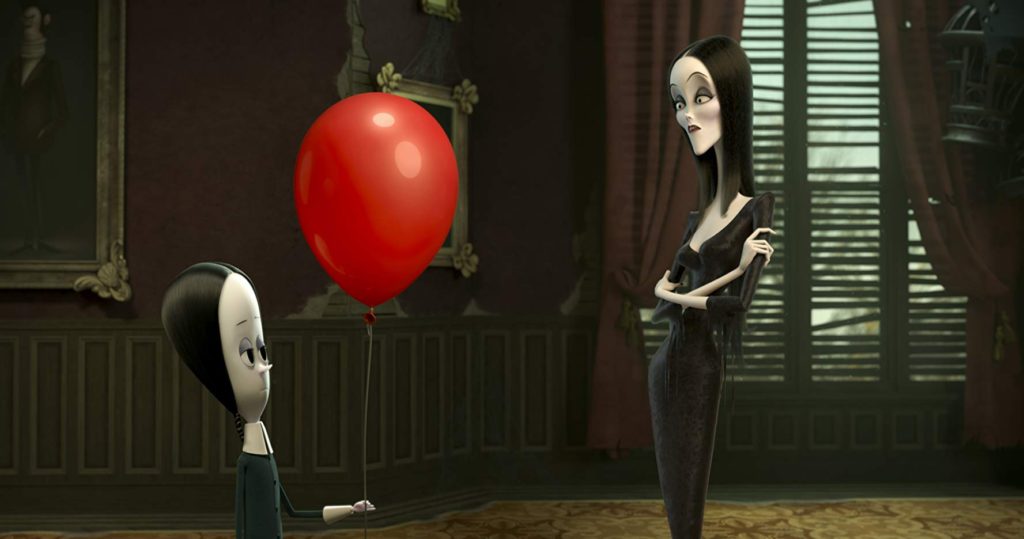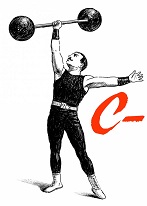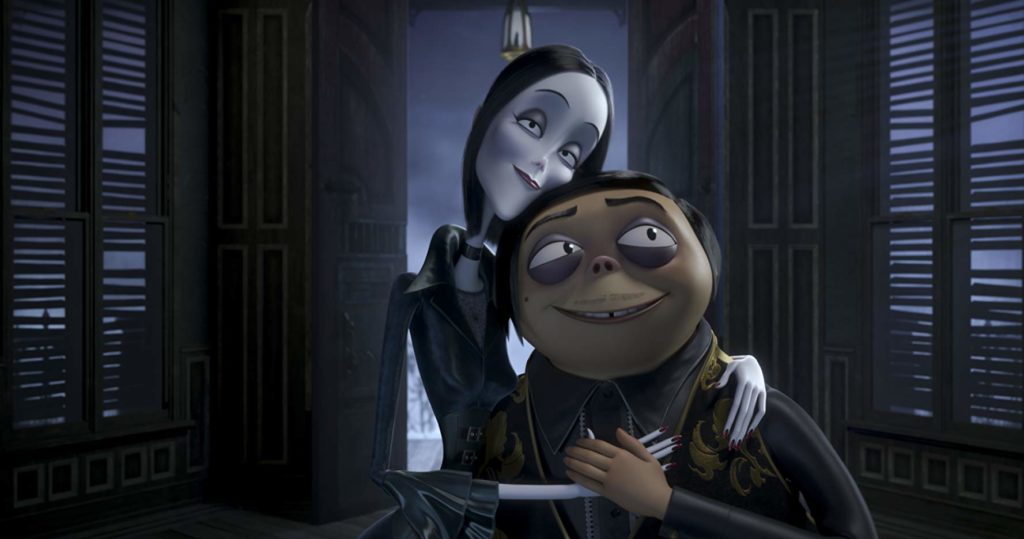Strange.
Deranged.
The Addams family is back everyone. Again… A creature that refuses to be put down, The Addams family has had an adaptation for basically every generation since its inception. From the ’30s comic panels to the ’60s live action show; from the animated sitcoms of the ’70s and ’90s, followed by the ’90s films, both theatrical and straight to video, a revised live action show, a stage musical, and finally this film. The Addams Family has been around for much longer than many of us have been alive. This film may be a testament to the staying power of the Addams; it’s also a lesson in poor plot structuring and lack of thematic focus.
“The Addams Family” is based on a series of single panel comics published in the New Yorker. First penned by Charles Addams in 1938, “The Addams Family” draws from the same satirical well that, for example “The Simpsons” or early “South Park” do. Satire has always been used as a weapon against the status quo and those who benefit from it. “The Simpsons” and the original “Addams” comic panels both satirize the “model family” – they simply target different time periods. “The Simpsons” goes after Regan era Dom-coms, Domestic Comedies that focus on the home lives of your standard Christian white cis-het family. “The Addams Family” goes after ’20s era versions of the same general group of people.
For much of the run of the comic the characters were unnamed. It was only when the comics were first adapted to television that the Addams family were given personalities and names. This first adaptation of the Addams Family, the 1964 television series on ABC, not only gave us the Addams Family Theme Song but the template through which all “Addams Family” adaptations would follow. The ’60s series worked because they knew who their target was and the change in format, from comic strip to television series, meant a change in perspective as well. The Addams, for the first time, had a chance to step outside of their bizarre world and into ours. The joke was no longer the strange antics of the family, it was us. Well, if you consider ’60s middle class suburbia “us.”
It’s important to note that the Addams Family has always been a political statement against conformity. This is a theme that has remained through all of the major adaptations. The idea of promoting individuality, of being unapologetically you and raising a skeptical eye towards those who wish to change you, is a stated goal of any “Addams Family” adaptation. It is the ability of an adaptation to carry these messages that determines its success.
The original comics played on our innate macabre tendencies. The ’60s television show was a satire of middle class suburbia; the ’90s films were a satire of H. W. Bush era conservatism. So where does “Addams Family” 2019 stand?
Its heart is in the right place, the bones are a little scattered though. That is to say that while this adaptation has good ideas, it seems a lacking in satirical focus. The individualistic and nonconforming Addams family is here. They just don’t quite know who the enemy is in a broader societal sense.
“The Addams Family” (2019) has a star studded voice cast. New stars like Finn Wolfhard and Elsie Fisher join more established actors Bette Midler and Charlize Theron to pretty bland effect. I wouldn’t say anyone gives a stand out performance. Some phone in their lines, others over act. Nick Kroll is obnoxious and overbearing as usual. Wolfhard’s voice doesn’t quite mesh with Pugsley’s design.
“The Addams Family” follows Gomez (Oscar Isaac) and Morticia (Charlize Theron) as they find their family life jeopardized by Margaux Needler (Allison Janney, the host of a television show on the Home and Garden Network (H.A.G Network) that wishes to sell houses in a nearby neighborhood. The name of the new town? Assimilation, of course. The town is literally called Assimilation. This is the type of messaging that is so on the nose, it becomes a joke in and of itself.

The actual plot of the film meanders from beat to beat but, the A plot generally follows Wednesday as she attempts to rebel against her mother by becoming increasingly normal. She goes to normal middle school and tries on regular accessories. The B plot follows Pugsley (Wolfhard) and Gomez as the frustrated father attempts to train his son for his “Mazurka” the Addams equivalent of the Bat mitzvah. The film gets a good amount of its comedy from one-off gags and visual comedy, following the tradition of the comic panels and early TV show*. A stand out is Morticia using the ashes of her Mother and Father as eye shadow and blush*. The rest comes from this oddly fractured and painfully predictable plot. It does a well enough job setting the core story up but, flounders in the second act, when it has to support both of these plots but seems more interested in Wednesday. They seem to lose sight of their original satirical targets to follow shiny objects in service of checking story beats off of the check list.
The targets of this film range from the main antagonist, to middle school cliques, to gentrification, fake news on social media platforms, and over bearing parents. It’s a scattershot that makes the core of the film hard to pin down, and wastes much of the 1 hour 45 minute runtime on sub plots that end up feeling like massive distractions from the main conflict of the film. The strained relationship between the children and their parents and the challenge of becoming an individual in a society that promotes assimilation are almost immediately forgotten. Instead we get The Addams’ extended family moving in, and the school, and a pretty dull action-packed final battle with the townspeople. They abandoned their themes.
The general portrayal of Gomez and Morticia’s parenting style is that of two extremely supportive and emotionally aware parents. Their open mindedness is often times played for laughs, supporting their children in hobbies that normal parents would do everything in their power to steer their kids away from. In this film however, both Morticia and Gomez become the very thing The Addams as a whole were made to speak out against. They want their children to conform to the traditions of the family. Morticia being legitimately mortified when she sees Wednesday wearing normal clothes, Gomez is highly disappointed in Pugsley for not doing well enough in his training. It leaves a bad taste in my mouth to see symbols of open and unapologetic weirdness be made into the conformists, even if it’s just so they can learn their lesson by the end of the movie.
At the end of the day there isn’t much to talk about in regards to the characters. Everyone but Wednesday feels like a side character. And Wednesday’s character is nowhere near strong enough to carry the film alone.
The character designs for the main cast are taken straight from the original comics, so everyone complaining that they made Oscar Isaac ugly can cram it. The one design that continuously baffles me is that of Parker, the main antagonist’s daughter. She’s definitely male coded, the first time we see her she wears jeans and a normal shirt and rides around on a bike. The name Parker is pretty gender neutral, it makes me wonder if maybe they planned on having her be a boy at some point but had to switch. The animation looks fine all in all but, I can’t help but wonder what the Tim Burton directed Stop Motion Addams Family would have looked like.
I do admit there were some moments I thought had potential. Specifically, the use of social media to stir up the fear of the townspeople was a great touch. But the good ideas are so isolated that none get a chance to build on one another.
It seems like the remakes and reboots aren’t going to stop. Nothing that was popular in the ’90s is safe. Generally I’m all for more animated properties, but this is one project I definitely prefer in live action… Can’t wait for the sequel in 2021…


